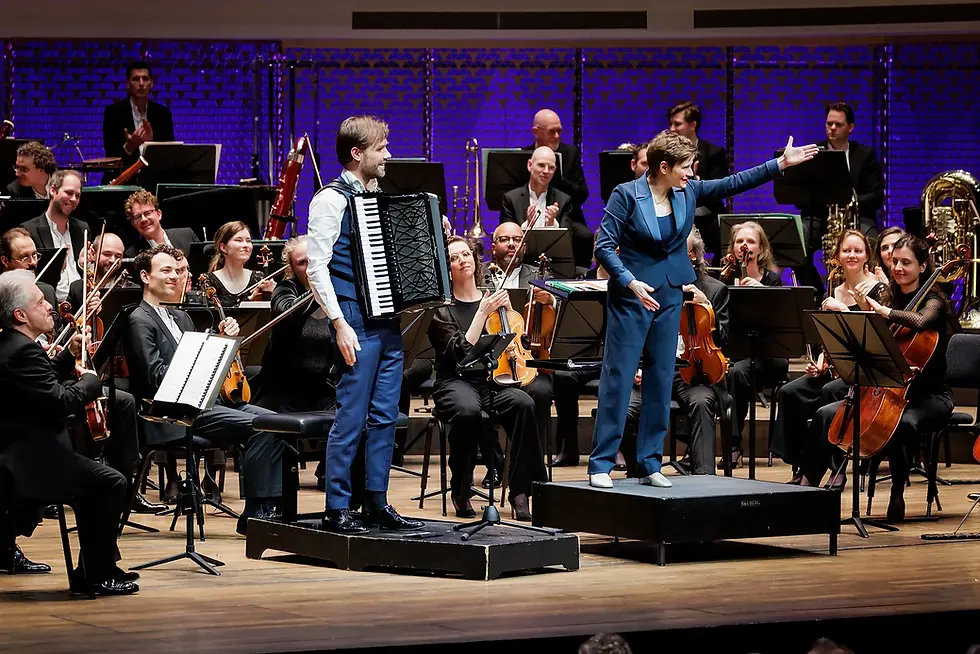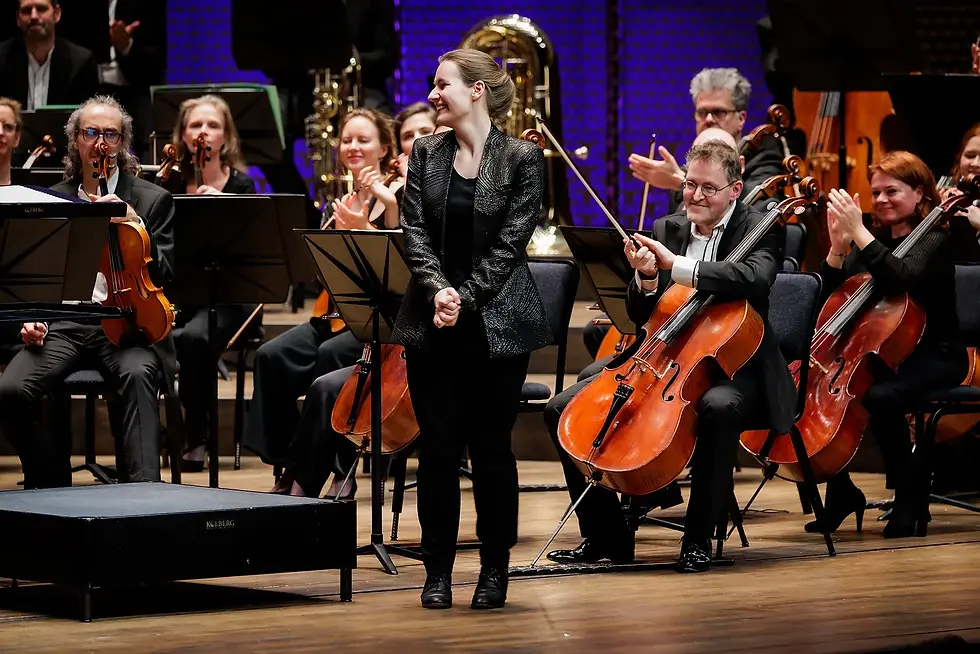“[Joyce] DiDonato coached three singers this morning, and did so inimitably. It was intriguing, entertaining and funny. And she answered wonderfully when a young composer in the audience asked how to make meaningful music. ‘Ask yourself what story you want to tell with your music, with what feeling you want to send your audience home. Stay close to yourself, touch them, give them something to enjoy.’

It was as if composer Mathilde Wantenaar had heard those words. The same night, the Residentie Orkest in the Muziekgebouw, led by the excellent Anja Bihlmaier, played the Dutch premiere of her Concerto for Accordeon and Orchestra. Written for the virtuosic Vincent van Amsterdam, who played the piece with great conviction and evident joy. Wantenaar plays deliciously with the expectations of the audience when it thinks of the accordion. You continually expect a singer to appear – from Paris or de Jordaan – to join in. There was a tango, and a melody that sounded like it came directly from a French operetta by Massager or Hahn.
As with DiDonato, it was intriguing, funny and entertaining. Wantenaar’s humour hits you in the guts when Van Amsterdam suddenly yanks open his instrument or conjures up amusing, loud dissonances. Or when he simply allows a whiff of air to escape. Wantenaar writes delightfully tactile music, and in passing adds ominous layers. The silent bell floating over the soft ending speaks volumes. Programmers, do not leave this piece on the shelf. Please perform it more often. These times deserve a Wantenaar.”
Peter van der Lint, Trouw, 15-03-2024.
Photo Festival Dag in de Branding | Wouter Vellekoop



